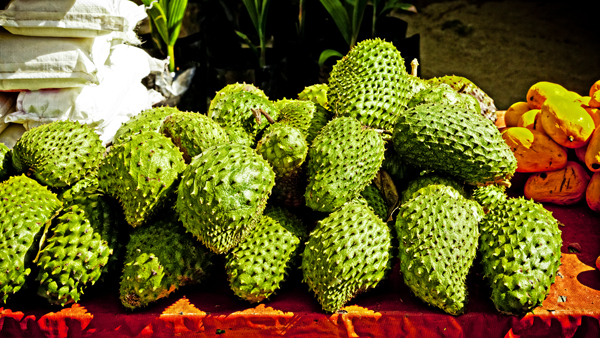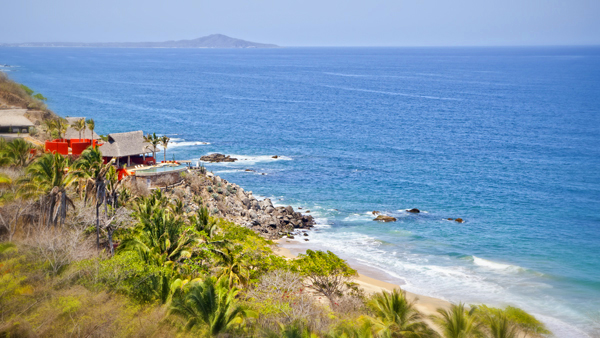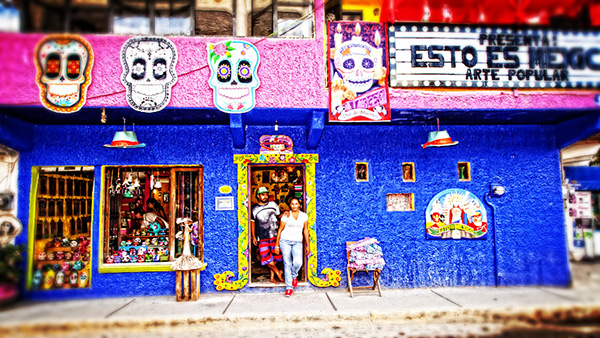This fruit blog examines the large, spiky green fruit called the guanabana, or soursop. These are the fruits of the broadleaf, evergreen tree scientifically known as Annona muricata, more commonly known as the Graviola. The fruit has a slightly threatening appearance, what with the spikes, but fear not, they are soft and will do no damage.
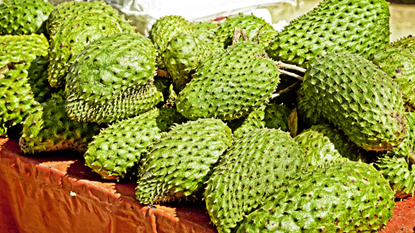
Guanabana, native to the tropical regions of the Americas, has long been revered for its medicinal qualities as well as its sweet flavor. The fruit, leaves, roots and bark are all known to contain antimicrobial ingredients known to clear up fungal and bacterial infestions as well as intestinal parasites.
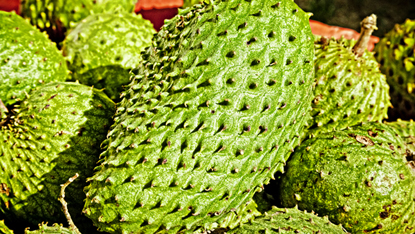
However, a more controversial theory about soursop lies in its supposed cancer-healing qualities. There is a ton of information all over the internet about this, but the short version is simply that soursop is up to 10,000 times more effective than chemotherapy at slowing down the growth of, and even killing, certain kinds of cancer cells, particularly in the cancers that attack the lungs, prostate, and pancreas. What’s got everybody who knows about this particularly excited is that the extract from the tree’s leaves, bark, fruit, etc., seems to target cancer cells, leaving healthy cells unharmed. This is a far cry from chemotherapy, which can be effective in treating cancer but inevitably does serious damage to non-cancerous, healthy cells as well, making people ill in other ways even as it cures or at least slows down the progress of their illness. Some studies call soursop the single most powerful natural anti-cancer plant on the planet.
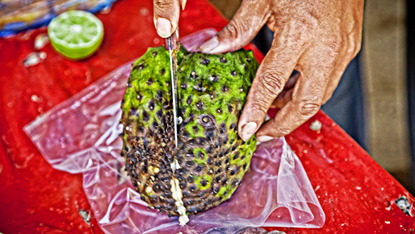
According to internet legend, back in the 1970s a leading drug manufacturer was doing research on compounds extracted from different parts of the Graviola, the soursop’s mother tree, known as the legendary healing tree of the Amazon, and discovered that these compounds really did work in combatting cancer. However, they could not figure out how to synthesize the plant’s most potent cancer-fighting ingredients. Thus, they could not patent it, control it, market it, and profit from it. And so, instead, they shut the project down and left the research unpublished. Suppressed.
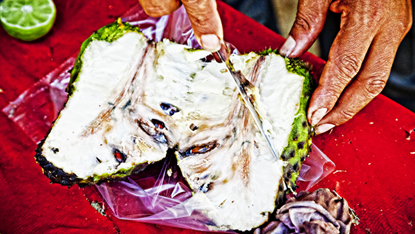
In the years since, in spite of the existing evidence, the appropriate clinical trials have not been done, and the plant’s apparently miraculous healing powers remain untested and unknown to most of the world. All you mainstream medical types out there will probably get annoyed at this but there is plenty of evidence to back up these claims. If you know someone who has been through chemotherapy and maybe didn’t do so well, you might consider suggesting this alternative, or supplement. I’m not one to be dispensing medical advice but I know from what I’ve seen that chemotherapy, as pricey and “sophisticated” a treatment as you can get in standard American medical practice, is fundamentally a crude, painful, and marginally effective treatment at least some of the time. So why not try a natural alternative, at least as a supplement to mainstream therapy, that has some scientifically sound research behind it?
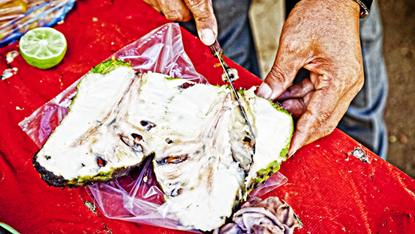
Sayulita is a hotbed of alternative healers and practitioners, so naturally soursop is well known and well respected around here, for flavor and medical powers both.
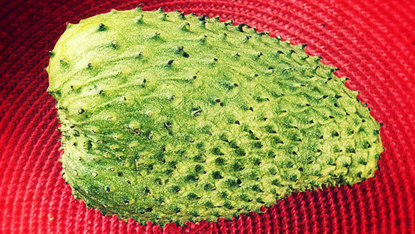
Meanwhile, if you simply want to enjoy the fruit, go for it. Cut it in half lengthwise and pull out the white pulpy flesh. That’s the edible part. It’s not pretty, and it’s not a tidy food to eat, since the soft, pulpy edible part is surrounded by fibrous tissue and seeds, but it tastes great, sweet with a tangy quality—strawberry, pineapple, and citrus are a few of the flavors conjured up. For many people, squeezing the juice out and drinking it is the preferred way of enjoying this fruit.
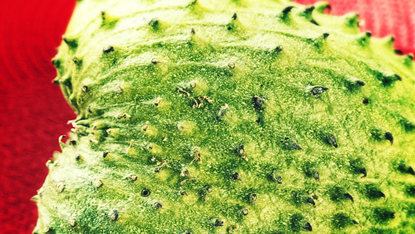
You’ll find guanabana for sale at fruit stands along Highway 200 in San Ignacio and elsewhere. Buy a few and give it a taste. You might find a new flavor that you love, and heal what ails you at the same time.


